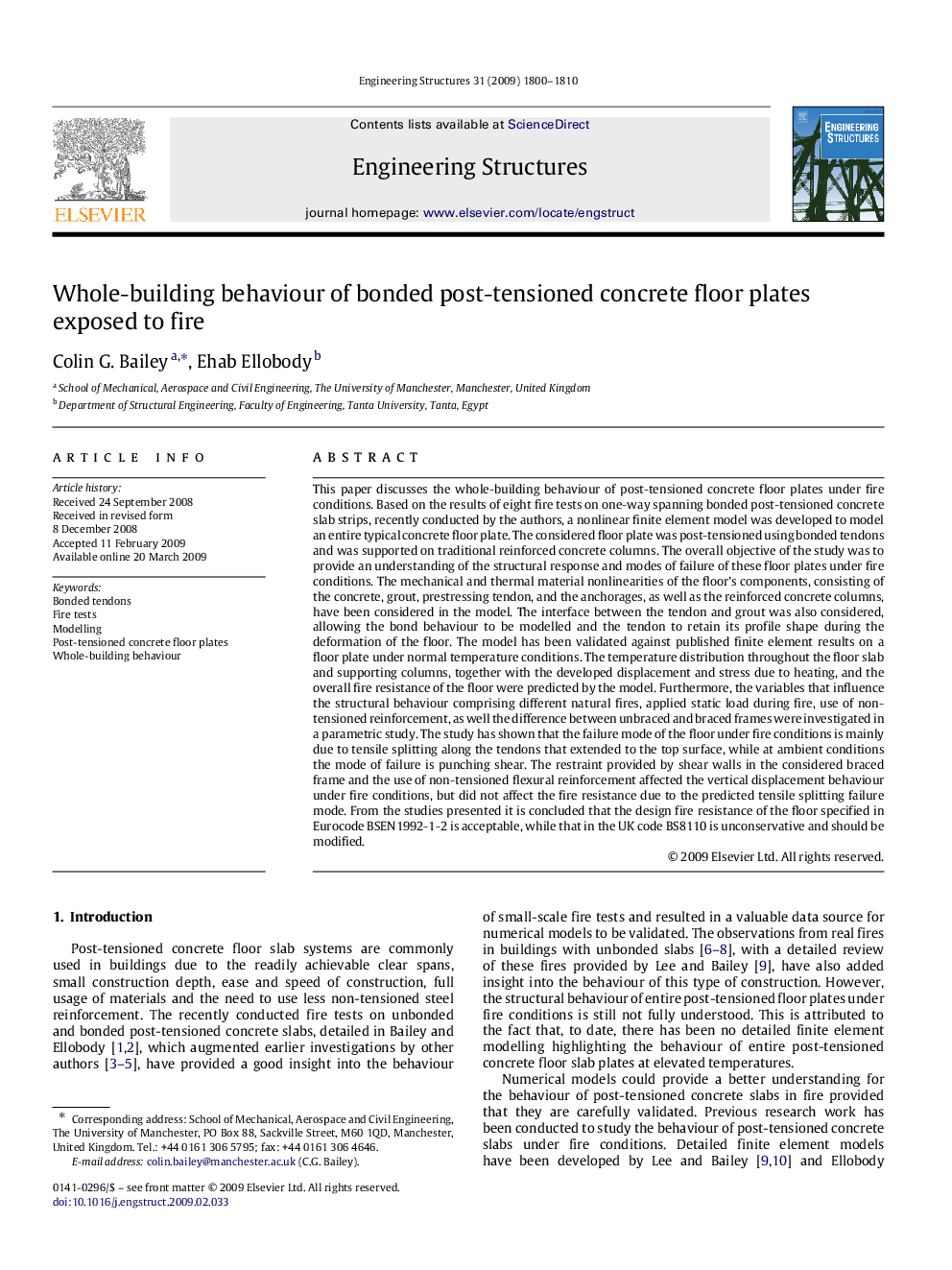| کد مقاله | کد نشریه | سال انتشار | مقاله انگلیسی | نسخه تمام متن |
|---|---|---|---|---|
| 268410 | 504434 | 2009 | 11 صفحه PDF | دانلود رایگان |

This paper discusses the whole-building behaviour of post-tensioned concrete floor plates under fire conditions. Based on the results of eight fire tests on one-way spanning bonded post-tensioned concrete slab strips, recently conducted by the authors, a nonlinear finite element model was developed to model an entire typical concrete floor plate. The considered floor plate was post-tensioned using bonded tendons and was supported on traditional reinforced concrete columns. The overall objective of the study was to provide an understanding of the structural response and modes of failure of these floor plates under fire conditions. The mechanical and thermal material nonlinearities of the floor’s components, consisting of the concrete, grout, prestressing tendon, and the anchorages, as well as the reinforced concrete columns, have been considered in the model. The interface between the tendon and grout was also considered, allowing the bond behaviour to be modelled and the tendon to retain its profile shape during the deformation of the floor. The model has been validated against published finite element results on a floor plate under normal temperature conditions. The temperature distribution throughout the floor slab and supporting columns, together with the developed displacement and stress due to heating, and the overall fire resistance of the floor were predicted by the model. Furthermore, the variables that influence the structural behaviour comprising different natural fires, applied static load during fire, use of non-tensioned reinforcement, as well the difference between unbraced and braced frames were investigated in a parametric study. The study has shown that the failure mode of the floor under fire conditions is mainly due to tensile splitting along the tendons that extended to the top surface, while at ambient conditions the mode of failure is punching shear. The restraint provided by shear walls in the considered braced frame and the use of non-tensioned flexural reinforcement affected the vertical displacement behaviour under fire conditions, but did not affect the fire resistance due to the predicted tensile splitting failure mode. From the studies presented it is concluded that the design fire resistance of the floor specified in Eurocode BSEN1992-1-2 is acceptable, while that in the UK code BS8110 is unconservative and should be modified.
Journal: Engineering Structures - Volume 31, Issue 8, August 2009, Pages 1800–1810